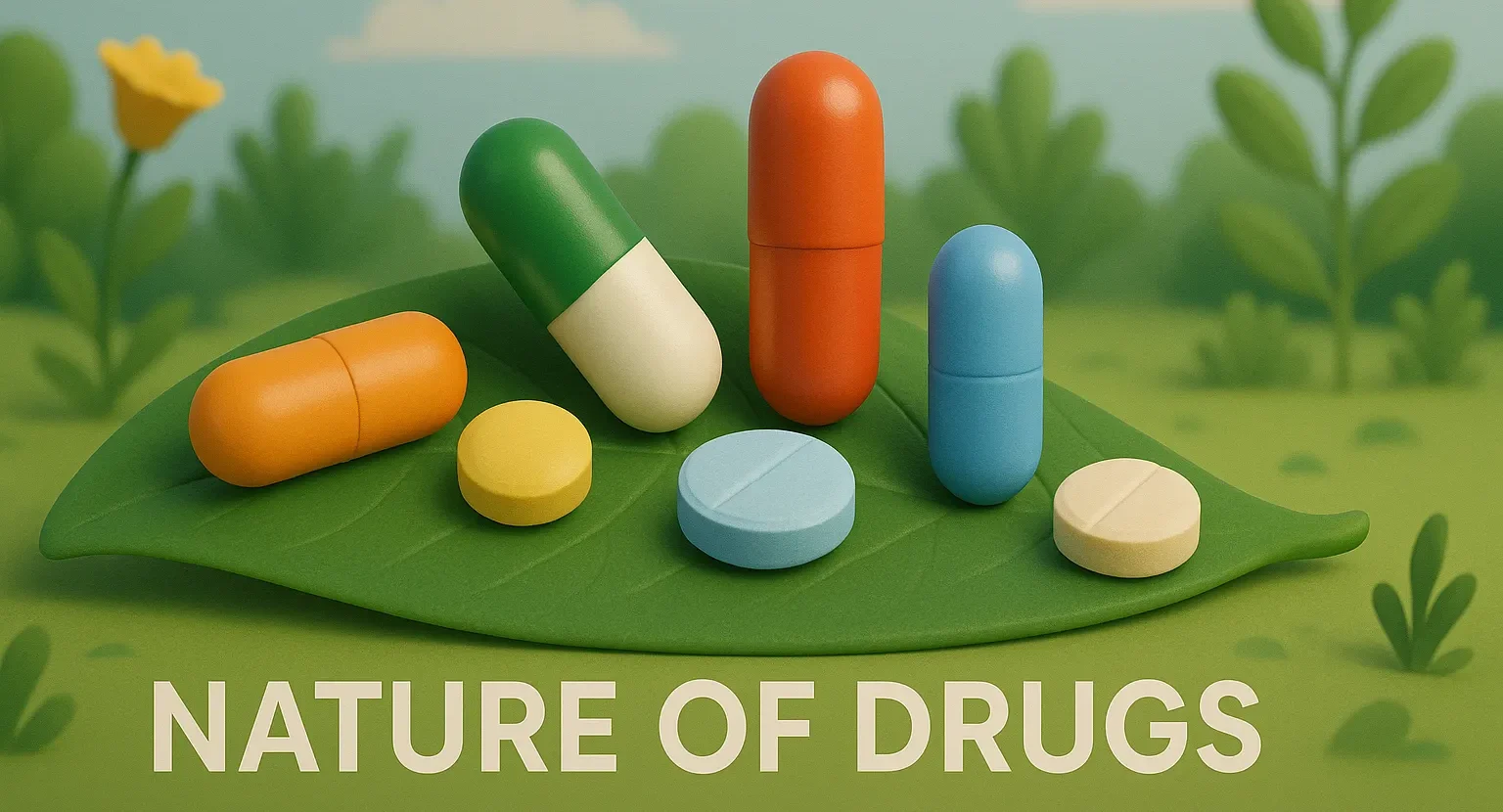Nature of Drugs refers to the physical, chemical, and biological properties of drugs that determine their action, effectiveness, and therapeutic use.
Definition of a Drug:
- A drug is any substance (natural or synthetic) that, when administered to a living organism, produces a biological effect.
- Drugs are used for diagnosis, prevention, treatment, or cure of diseases.
Chemical Nature of Drugs
-
Organic vs. Inorganic
- Organic: Most drugs are organic compounds (carbon-based), often containing nitrogen, oxygen, sulfur.
- Inorganic: Some drugs are made of metal ions or salts (e.g., lithium carbonate, magnesium sulfate).
-
Acids and Bases
- Most drugs are weak acids or weak bases.
- Their ionization affects absorption, distribution, and excretion.
- Ionized (charged) drugs are water-soluble but poorly lipid-soluble → poor absorption.
- Non-ionized (uncharged) drugs are lipid-soluble → better absorption.
-
Physical States
-
Stereoisomerism
- Some drugs have optical isomers (enantiomers) with different biological activities.
- Example: L-isomer of propranolol is active; D-isomer is less active.
-
Prodrugs
- Inactive compounds that become active after metabolic conversion inside the body.
- Example: Enalapril (inactive) → Enalaprilat (active).

